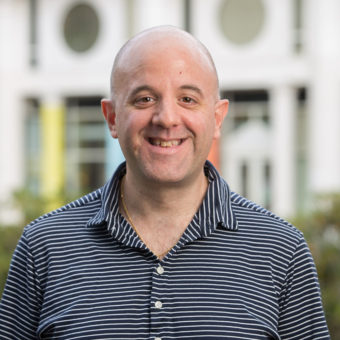Schizophrenia is a serious mental disorder affecting an average of 51 million people worldwide. It consists of a range of symptoms including delusions, hallucinations, paranoia, memory deficits, and abnormal emotional expression, which commonly begin between the ages of 18-24. These symptoms are devastating to the lives of the individuals and their loved ones. In the U.S. alone, an estimated 62.7 billion is spent each year to for treatment of schizophrenia. Years of research have identified abnormalities in a number of neurotransmitter systems including the dopaminergic, GABAergic, and glutamatergic systems, and have indicated abnormal brain connectivity. The questions still remains as to how these factors are all linked together and why the symptoms begin during late adolescence. My research has focused on studies of extracellular matrix molecules as a possible answer to both of these questions. These molecules are highly expressed during development and regulate the migration of neurons as well as the development of connections between neurons. Brain regions involved in emotional processing and memory formation, both of which are abnormal in schizophrenia, complete their development of connectivity during late adolescence, which coincides with the age of onset of schizophrenia. Abnormal expression of extracellular matrix molecules may result in aberrant connectivity in regions responsible for emotion and memory processing, such as the amygdala and the entorhinal cortex. These molecules are also involved in the regulation of dopaminergic, GABAergic, and glutamatergic neurotransmission, thus they may represent a unifying factor in the deficits reported in each of these neurotransmitter systems. In a recent study of the amygdala and entorhinal cortex, we reported massive increased expression of extracellular matrix molecules in these areas in schizophrenics compared to control subjects. With the help of the Rappaport Mental Health Scholar Award, I am now continuing the study of extracellular matrix abnormalities by extending the research to examine other brain regions involved in schizophrenia, as well as possible relation of these molecules to other molecules affected in this disorder. Further study of extracellular matrix abnormalities may provide insight into the development of schizophrenia and identify a unifying factor between the multiple neurotransmitter systems implicated in this disorder, and may potentially lead to improved diagnosis and treatment. This award will allow me to develop a career path as an independent investigator and to pursue my longstanding goal in assisting millions of people who suffer from mental disorders.

Harry Pantazopoulos, PhD

Harry Pantazopoulos, PhD
Organization
McLean Hospital
Program
McLean Hospital Mental Health Research Scholars
Year
2010 - 2011